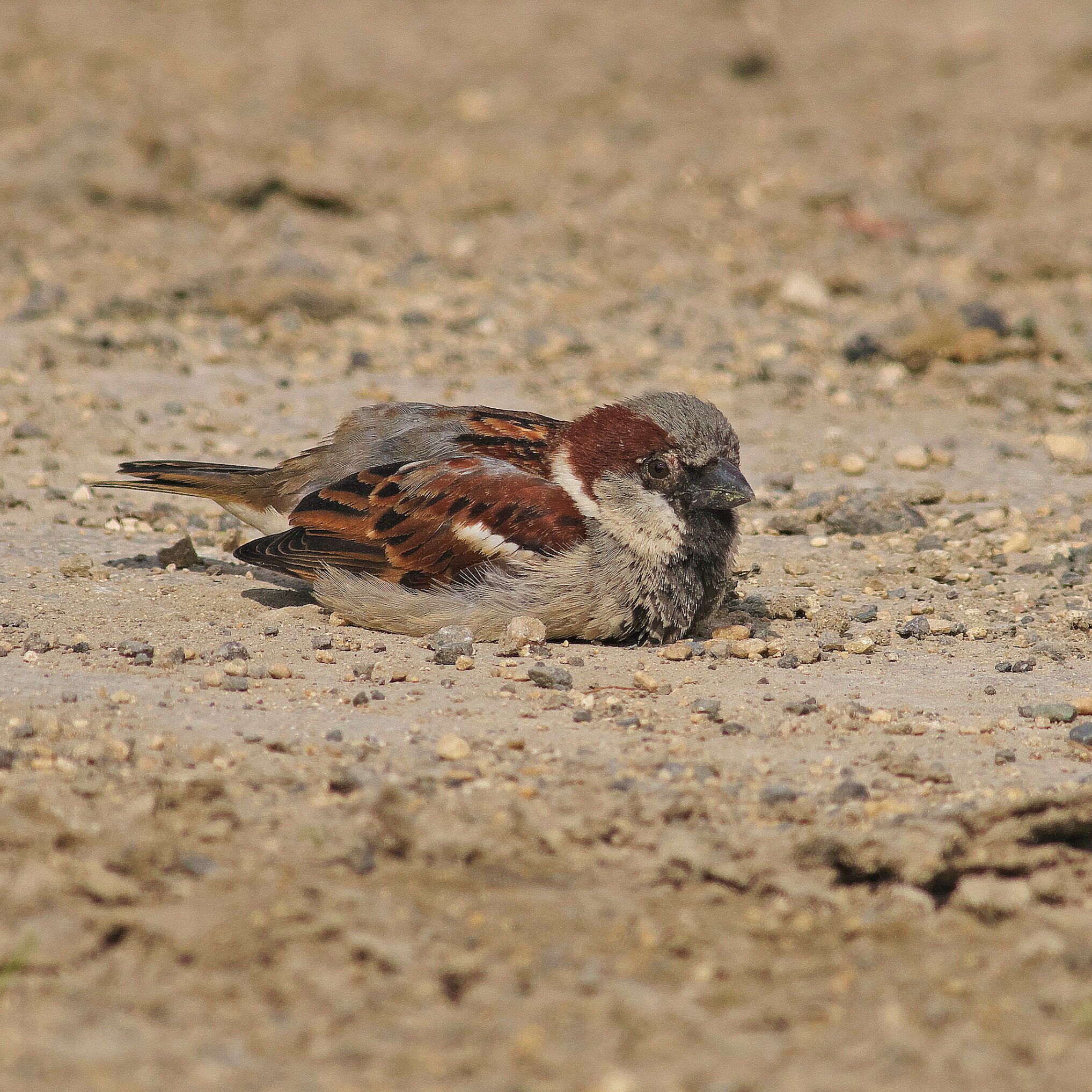'Dust bathing' is a documented phenomenon among birds. Here's why scientists think they do it — and how to add a bird dust bath to your yard.

Why Would a Bird Take a Dust Bath in Dirt?

It’s no secret that to humans, birds have a variety of peculiar behaviors. We can only assume those habits work for them, but to us, it doesn’t quite make sense why a crow would swallow a rock, or why a blue jay would rub ants over its feathers. One such odd behavior? Dust baths.
For humans, getting covered in dust would be a reason to take a bath, not something in which to bathe. For birds, however, dust baths are a well-documented phenomenon; and while we can’t be sure why they do this (it’s not as if we can ask them), scientists have a few leading theories about why a bird dust bath happens.
On This Page
How Do Dust Baths Help Birds?

Dr. Lina Rifai, associate professor of vertebrate biology at Indiana University – Kokomo and a member of Indiana Audubon’s Board of Directors, emphasizes that we can’t know for certain why birds partake in this behavior. (After all, it’s not as if we can ask them.)
However, she says, general bird behavior analysis offers a few possibilities. “The hypothesis for it is feather maintenance and to remove parasites,” she says. “They go in there and open their wings and spread the dust throughout their body, and it helps them remove excessive lipids (fats), similarly to why we wash our hair.”
Learn how to clean a birdbath the right way.
Which Birds Take Dust Baths?

As far as which birds habitually get dusty, Lina says aquatic birds are often less likely to dust-bathe than desert birds, for example, who have more access to dirt and dust than water. With that said, even common backyard feeder birds will do it. “We know our sparrows love doing it, robins will do it, bluebirds, wrens,” Lina says. “It seems to be about availability, and feather maintenance.”
Interestingly, for some species, dust bathing can be about more than getting clean or reducing parasites. “California quail, it’s been shown, do this as a communal activity,” Lina says. “For social birds, it can be a social cohesion experience.” Mated pairs can do this as a bonding activity as well.
Learn all about bird wings and flight feathers.
How to Build a Bird Dust Bath
Of course, the question then becomes whether birds prefer water or dust for bathing. We commonly hear about putting up birdbaths in our backyards, but should we be putting up dust baths, too? “Some studies have shown that if the bird doesn’t have water available, they’ll take dust baths — some studies show that they’ll take dust baths no matter if there’s water or not,” Lina says.
If you’d like to set up a bird dust bath in your yard, Lina has a few tips. First, she says to locate your dust bath close to shrubs or a bush, so birds have a place to go where they’re protected. “You’d want to use an area that drains really well, so you don’t get bacteria growing,” she mentions. She recommends a mixture of soil, sand, and even some ash. Make sure it’s the proper size for the birds to rest in completely, and, if possible, keep it in the sun.
Psst—here’s how to make a DIY butterfly puddler.
Sparrows Bathing in Ashes

“After emptying some ashes into my garden area, I saw a large gathering of house sparrows taking a “bath” in the ashes the next day. Why were they doing that?” asks Birds & Blooms reader Linda Ruesink.
Birding experts Kenn and Kimberly Kaufman say, “Like many other birds, house sparrows are fond of taking dust baths. Finding a patch of very fine, dry dust, they settle into it, fluffing their feathers and flapping their wings to spread the dust through their plumage. Then they preen it out, helping to remove grease, loose flakes of skin and small external parasites.
Ashes can be even more effective than regular dust because of the very fine texture. Ashes are also more likely to repel small parasites such as mites or lice. Avoid providing birds ashes from treated lumber or other chemically-treated products.”
Next, read about bizarre and surprising bird facts you should know.
About the Experts
Dr. Lina Rifai is an associate professor of vertebrate biology at Indiana University – Kokomo and a member of Indiana Audubon’s Board of Directors.
Kenn and Kimberly Kaufman are the official bird experts for Birds & Blooms. They are the creators of the Kaufman Field Guide series and they lead birding trips all over the world.
Sources
- Oklahoma Department of Wildlife Conservation, “Birdbath Tips“




















